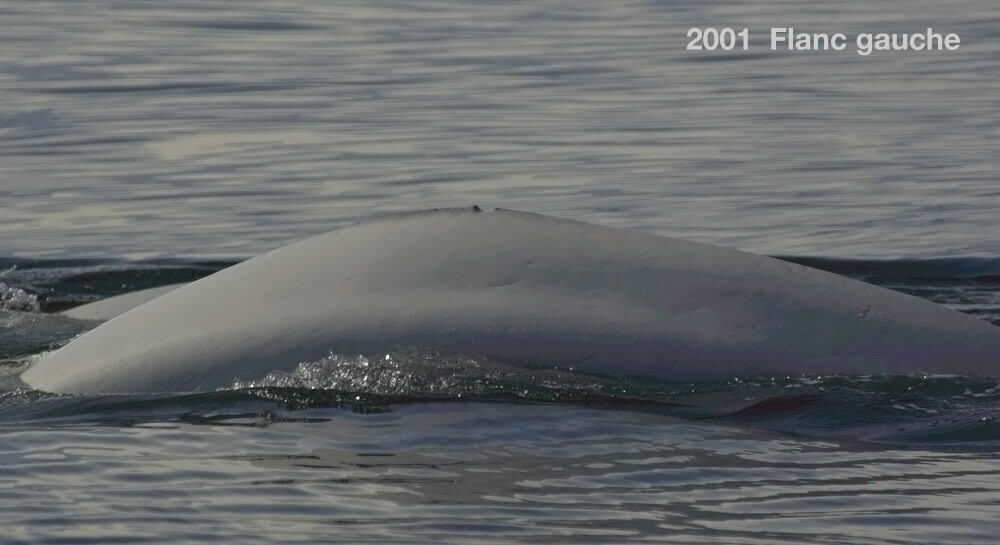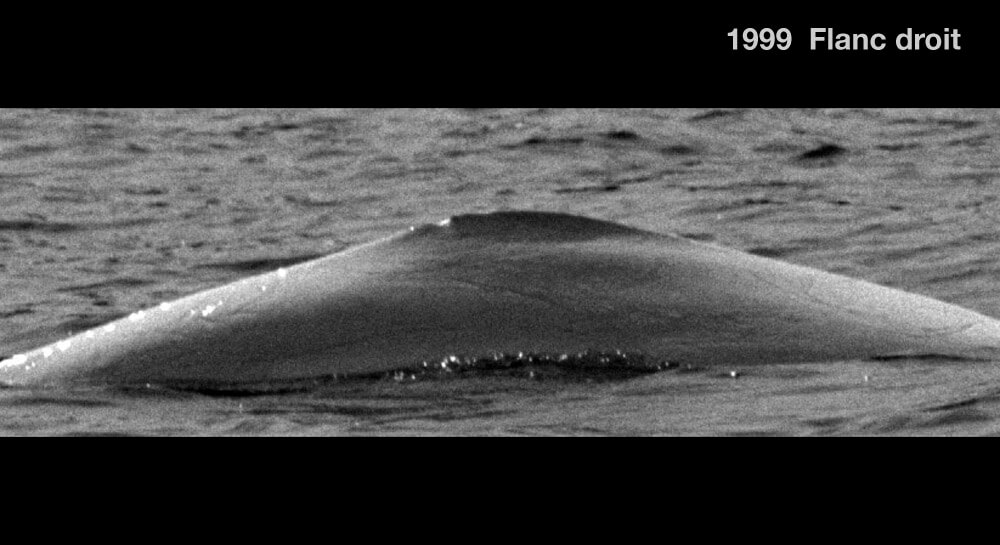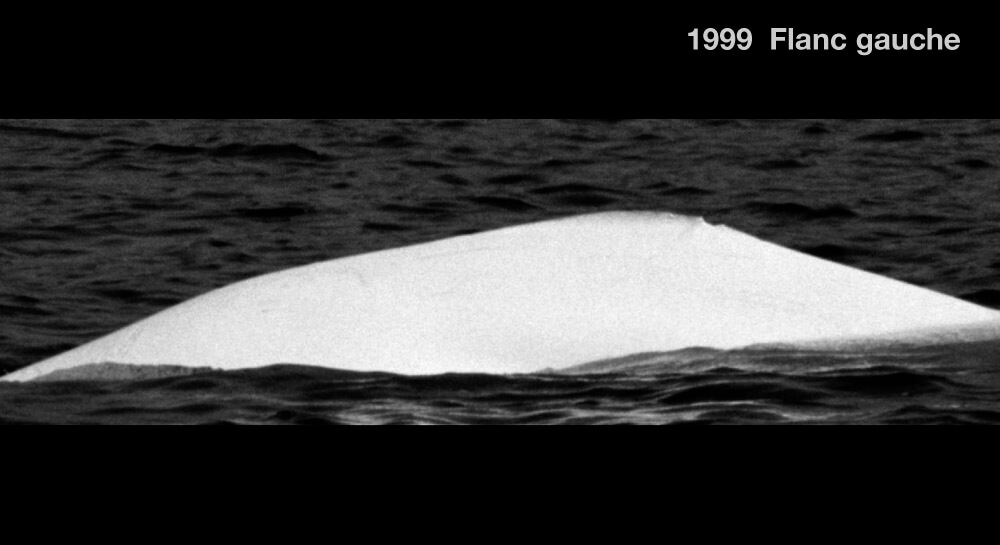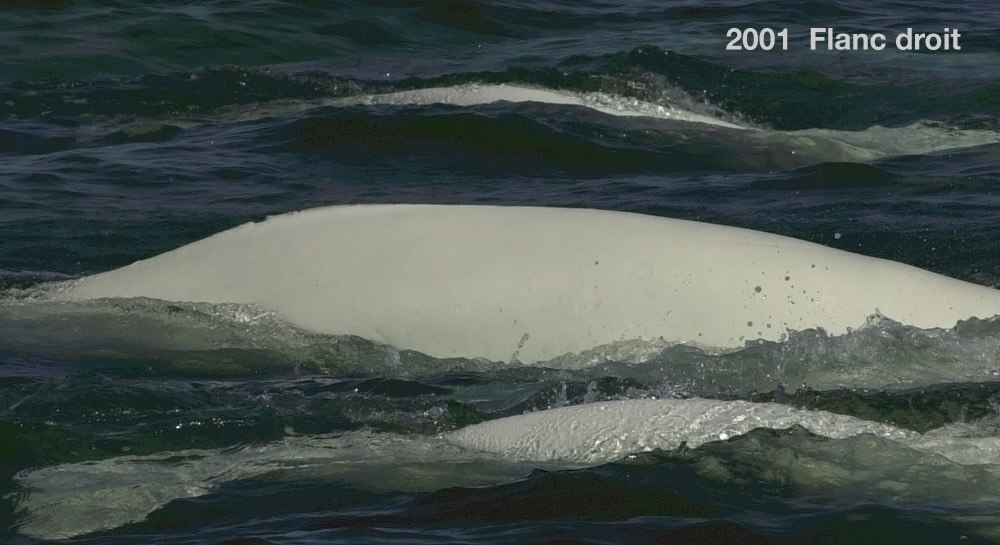Tadou
Beluga


Adopted by Road Scholar (previously Tadoussac Elderhostel) - Benny Beattie
-
ID number
DL1529
-
Sex
Male
-
Year of birth
Around 1985
-
Known Since
2000
Distinctive traits
Left or right side, Tadou can be recognized by the particular shape of his wide notch at the end of the dorsal crest and the other small details it contains.
Life history
Tadou was first photographed in 2000. At the time, he was pale grey, almost white. From 2001 onwards, he was always recorded as “white”. He would therefore have been born around 1985.
Tadou’s habits and associations lead us to believe that he is a male. A biopsy carried out on the animal in 2000 confirmed that it is indeed a male.
Future encounters with Tadou may enable us to determine which of the three male networks Tadou has joined. In summer, there is segregation between males and females. Two networks of males frequent the head of the Laurentian Channel and the Saguenay Fjord. Another network of males, known as the “Downstream Boys”, also uses the head of the Laurentian Channel sector and the downriver portion of the Estuary. Even if their territories overlap, individuals from one network seldom rub fins with males of other networks. Within these networks, there are bands – small groups of males seen together on a regular basis.
Tadou is one of the belugas frequently seen in the Saguenay fjord and its mouth. Belugas often use currents and tides to move around and save energy. Although they have physical characteristics that enable them to move easily through the water (hydrodynamic body, powerful tail, smooth skin and stabilizing pectoral fins), belugas remain, at 7 km/h, the slowest of the odontocetes.
Observations history in the Estuary
Years in which the animal was not observed Years in which the animal was observed
Latest news
This is the third and final week of the intensive biopsy program for St. Lawrence belugas. In the mouth of the St. Lawrence, we come across a herd of some forty individuals, among whom we recognize Tadou. The herd is divided into two large groups : a group of females with young, followed by a group of large male belugas.
It’s a beautiful encounter. Tadou was last seen in 2015. What happened to him? Has he moved to another area? Has he remained invisible to researchers? One thing’s for sure, his story remains a valuable source of information, helping us to better understand this fragile population. We look forward to seeing Tadou again in the coming seasons.
Sponsor
Road Scholar (previously Tadoussac Elderhostel) – Benny Beattie has adopted Eldy (2000), Canusa (2001), Tadou (2004), Amalena (2014) and Nomi (2015).
I have been coming to Tadoussac since the age of 8 months (i.e. since 1938) and I, my wife, daughters, son-in-law and grandchildren love this country. We were raised with these whales, and belugas in particular, and participants in my Elderhostel groups were also touched by these wonderful whales, so we decided to help protect and preserve them by contributing funds to the adoption program. To learn more about Tadoussac Elderhostel, you can visit Tadalac.com.
Thank you,
Benny Beattie





